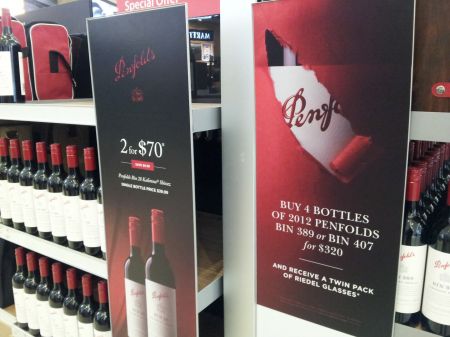Sommeliers Choice Awards 2024 Winners
Distributor Business: The Owner's Scorecard
As the owner of a beer, wine or spirits distributor, you have to ask yourself and your management team, how well did we do?

As the owner of a beer, wine or spirits distributor, you have to ask yourself and your management team, “how well did we do?” Well, if you’re an Anheuser-Busch Distributor, you probably completed a “Dimensions of Excellence” Program Review. If you’re a Miller-Coors Distributor, you probably were part of the “Miller Masters” Program Review. If you’re an E & J Gallo Distributor, you’re part of an “Annual Distributor Evaluation” Program for quality control, marketing and merchandising standards. But, what if you’re not part of any of these Evaluation Programs and you want to have Scorecard for your own operation?
Here is an outline of the Control and Review questions you and your management team should be asking and evaluating your performance on:
Control and Review:
The Annual Business Review should include all decision-makers and all Managerial Areas should be covered:
- Sales and Marketing
- Sales Management/Planogram Systems
- Warehousing and Vehicles
- Delivery and Route Mangement Systems
- Administration/Inventory Management
- Finance/Accounts Payable/Accounts Receivable
- Information Technology
- Human Resources
Sales and Marketing questions:
1. Sales Volume:
A. Did you review your Company’s 2013 volume performance—by brand, by SKU, on-premise, off-premise, sales route, population segments, key retail chains, tap accounts, warm shelf, and coolers?
B. Has your organization established volume targets by brand and SKU for 2014?
C. Do you have unexplored niches or segments that you feel growth will come from?
D. Have you allocated resources to develop those unexplored niches?
2. Distribution (For each major brand in the house):
A. Have you established off-premise distribution goals?
B. Do you have simple distribution goals (1st 60, 90, 180 days)?
C. Do you have multiple distribution goals (1st 60, 90, 180 days)?
D. Have you identified non-buyers?
E. Have you created an account distribution survey (semi-annual, annual)?
F. Have you published and posted a “most wanted list?”
G. Have you created sales incentives for this “most wanted list?”
3. Merchandising:
A. Do you employ merchandising personnel (weekdays and weekends)?
B. Do you utilize shelf space management technology such as JDA Prospace, Nielsen Spaceman, ezPOG or Shelf Logic Enterprise?
C. Do you conduct an effective off-premise retail development program?
- Do you conduct a shelf space management development program?
- Do you conduct a display program?
- Do you conduct a P.O.S. placement and evaluation program?
D. Do you conduct an on-premise retail development program?
4. Sales Call Frequency:
A. Is an established call frequency program utilized by salesmen that calls on key potential accounts and includes regular calls on non-buyers?
5. Co-Op Advertising:
A. Does your organization supplement, (where legal), your major supplier’s media effort through support of local marketing programs?
6. In-House Incentives:
A. Do you participate in all major supplier incentive programs?
B. Which incentive programs were most effective?
C. Do you provide in-house incentives to sales personnel to maximize their sales and merchandising efforts and reward accomplishments?
7. Sales Promotion:
A. Do you conduct (where legal), brand promotion and special events to sample customers, excite retailers, and create a favorable public image?
Sales Management System:
1. Annual Business Plan:
A. Do you provide an annual business plan to your major suppliers?
1. Is the plan reviewed monthly and updated quarterly?
2. Are action plans communicated to personnel?
3. Is progress on goals monitored and communicated?
2. General Management System:
A. Are principals available during all regular operating hours?
B. Is there an alternate operations manager (GM) with decision making authority appointed?
C. Is a call frequency established for all top management?
3. Sales Management System:
A. Are weekly sales meetings conducted?
B. Is a call frequency established for all sales personnel?
C. Are sales “score-cards” posted?
D. Do sales personnel know their shelf space objectives?
E. Do sales personnel execute a planned display program?
F. Are action plans developed to improve shelf management?
G. Do you communicate and review results vs. action plans to all sales personnel?
4. Brand Management System:
A. Have you appointed an appropriate number of major supplier brand managers?
B. Do major supplier brand managers devote the appropriate amount of time to brand management assignments?
5. Draught Beer Management:
A. Do you post draught account and “Most Wanted” lists and provide regular follow-up on accounts?
B. Do you have an appointed draught manager responsible for draught sales programs?
C. Do you hold regularly scheduled promotions in these “Most Wanted” on-premise accounts?
6. Point-of-Sale Management:
A. Is P.O.S. properly stored?
B. Does the inventory system include warehouse and retail trade?
C. Is paper P.O.S. organized and readily accessible to all sales personnel?
D. Does a neon repair program exist?
7. Ethnic Markets Management:
A. Where applicable, do you develop and implement ethnic marketing programs?
B. Are ethnic market programs included in your Annual Business Plan?
8. Management Development:
A. Do you provide training programs for personnel?
9. Community Involvement:
A. Are you and management personnel actively involved in community events and service groups?
B. Are you actively involved in alcohol responsibility programs or similar programs that positively promote beer, wine or spirit consumption in moderation?
C. Are you involved in supporting minority, cultural, and community events and services?
Warehousing
1. Appearance:
A. Do you maintain a clean, well-operated warehouse fully capable of meeting your major supplier’s required inventory levels?
2. Facilities:
A. Is warehouse equipment clean and maintained in safe working order?
B. Do you maintain proper repack area and an adequate supply of materials?
C. Do you have an inventory control system for P.O.S.?
D. Do you provide adequate, clean office space and office equipment that is in good working condition?
Here is an outline of the DELIVERY SYSTEM questions you and your management team should be asking and evaluating your performance on:
1. Driver-Sales Personnel:
A. Are driver-sales personnel fully informed and trained in all aspects of their job responsibility?
B. Are driver-sales personnel neatly groomed and do they wear major supplier uniforms from authorized uniform vendors?
2. Retail Inventory Management:
A. Is stock rotated properly and regularly at each retail account?
B. Do employees carry the major supplier’s code cards and are they familiar with their use? Are the employees checking vintages and rotating in the freshest product at retail?
C. Do programs exist for tracking and following up on all package and draught distribution?
D. Do you maintain proper inventory levels avoiding out of stock conditions?
3. Route Sales:
A. Does a route delivery system exist that provides maximum productivity in call frequency, sales, and customer service?
B. Are route books or online software complete, accurate and used on a daily basis by delivery personnel? Do you use VIP, Apprise, BMobile, High Jump. Encompass 8, Savant, or EIC Route Management Software systems?
C. Do you maintain and post updates to online sales systems instantly, daily, or at minimum weekly for inventory replenishment for package and draught?
D. Does a planned call frequency exist that includes both multiple calls per week, (or even daily) for large volume accounts and regular calls on non-buyers?
4. Fleet Appearance/Maintenance:
A. Are vehicles supplier identified and kept clean, safe and in working order?
B. Are vehicles cleaned weekly and washed daily?
C. Does a preventative maintenance program exist?
D. Does a vehicle replacement plan exist, including sufficient backup equipment to handle emergencies?
Administrative
1. Inventory Management:
A. Do you properly rotate warehouse stock which is monitored by code date that is posted in front of each pallet row?
2. Distribution Order Plan:
A. Do you submit orders in accordance with major supplier ordering and shipping policies?
B. Do you develop an annual sales forecast based on seasonal and promotional trends, and maintain appropriate inventory levels?
C. Is your sales forecast utilized as part of the Annual Business Plan?
D. Is one employee assigned to review inventory levels on a daily basis?
E. Are all employees involved in the physical count of inventory at year end?
3. Payment Terms and Recordkeeping:
A. Have you not had an NSF check or EFT returned during the last twelve months?
B. Are sales records accurate and current?
4. Account Classification:
A. Do you classify accounts based on major supplier criteria and provide sorting/grouping according to any combination of classification?
5. Financial Statements:
A. Do you provide annual financial statements to your major suppliers following the close of each year?
B. Do you provide unaudited interim financial statements to major suppliers each quarter?
6. Communications:
A. Do you keep all personnel and retail trade informed of promotional activities, sales programs, special events, etc. and on your website?
Related article you might be interested in -














